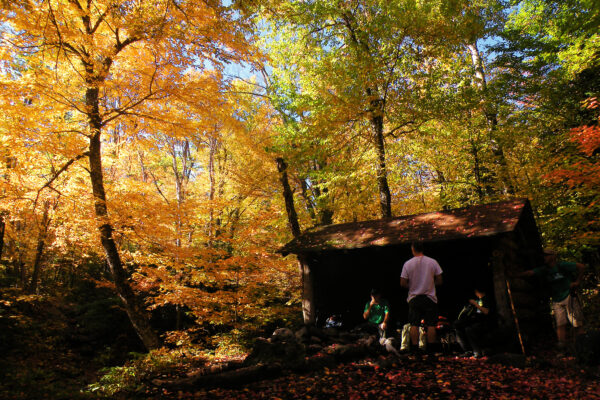Part 3 of 4
When you walk through the woods for miles at a time, it stimulates blood flow throughout your body. The brain is often a passive beneficiary, and in my observation some of my most thoughtful moments occur while I’m hiking. If there is someone with me, this might even stir a conversation.
On one such occasion several years ago, a friend and I were talking about Whitney and its status as a legally-protected wilderness. As much as I loved the place, my observations of its over-built roads and logged-over sapling forests stretched my own conceptions of what a wilderness should be. The loggers had tossed about empty containers of motor oil everywhere they went, and past forestry efforts meant that non-native trees such as Norway spruce and Scotch pine were now naturalized citizens of the remote backcountry.
So the question my friend put to me was this: is the wilderness description, as outlined in the Adirondack Park State Land Master Plan, a descriptive statement or a proscriptive statement? In other words, when we decide to classify a section of public land as “wilderness” with the intent of barring mechanized travel and protecting its sense of remoteness, is all that stuff about how it “generally appears to have been affected primarily by the forces of nature, with the imprint of man’s work substantially unnoticeable” intended to describe its existing condition, or is it intended to proscribe all the things we’re not going to do going forward?
I don’t remember my specific answer at that time. But today my answer would be both. I have seen enough of the Forest Preserve to know that if the SLMP had been applied on a literal (i.e. descriptive) basis, then the delineations between our wilderness and non-wilderness sections of public lands would look much different. In some cases this might be for the better, as I know of many places in the non-wilderness parts of the Adirondacks that meet (and even exceed) every single criteria for a wilderness designation.
At the same time, though, that proscriptive element is also required. While exploring our larger wilderness areas in the early twenty-first century, it is easy to forget just how corrupted they once were: truck trails in the High Peaks, telephone lines and floatplanes at the West Canada Lakes, snowmobile trails in the Siamese Ponds area, motorboats on the Oswegatchie River. It is a key element of human nature to want to improve things, and nature is often high on the list of items we, as a technologically-advanced society, want to improve. And thus the movement to protect wilderness in the twentieth century was motivated in response to this tendency; had no action been taken, our wilderness areas were facing an extinction-level event. Therefore some housekeeping was necessary to bring these places up to par, including the active removal of certain non-conforming features.
Certainly, though, Whitney challenged those assumptions, even for me. While the waterways were spectacular, the inland story was much different, with roads that were more “pristine” than the surrounding forest, and the pervasive litter from the logging operations that was still much too recent to be perceived as “historic artifacts.”
And yet I possessed the imagination to see what the place might become within my own lifetime. Even high-graded forests grow back, and already during the first decade of state ownership I could see the gravel surface of the roads vanishing under an encroaching layer of vegetation. In other parts of the Adirondacks, there were places so heavily logged that Barbara McMartin despaired over their condition in her guidebook entries from the 1980s; twenty-some-odd years later, those same places had aged into something more attractive. The same process had already started here at Whitney, but it would take patience to see it through to fruition.
Part of a series on Whitney Park:



